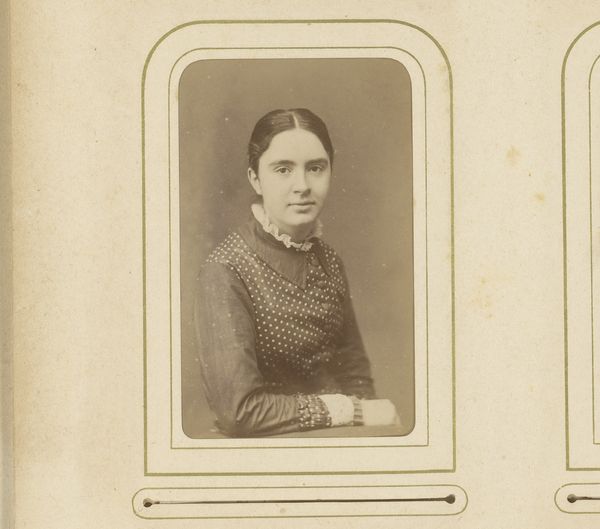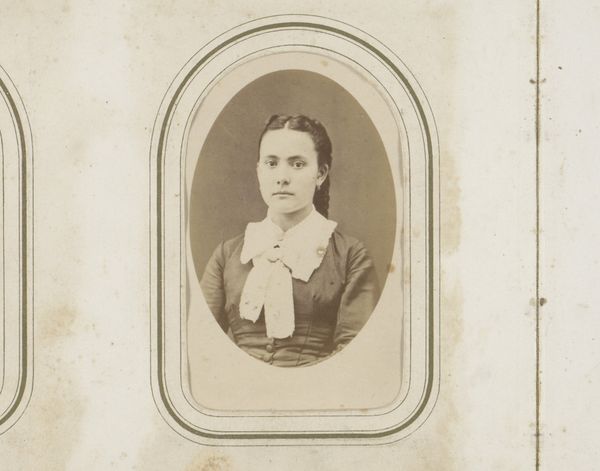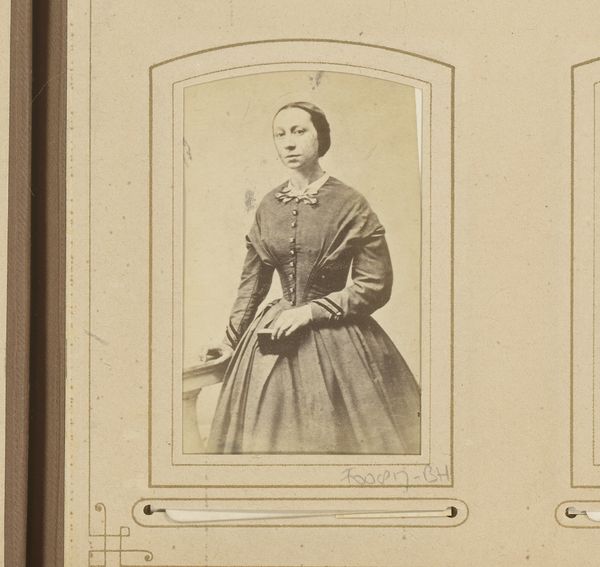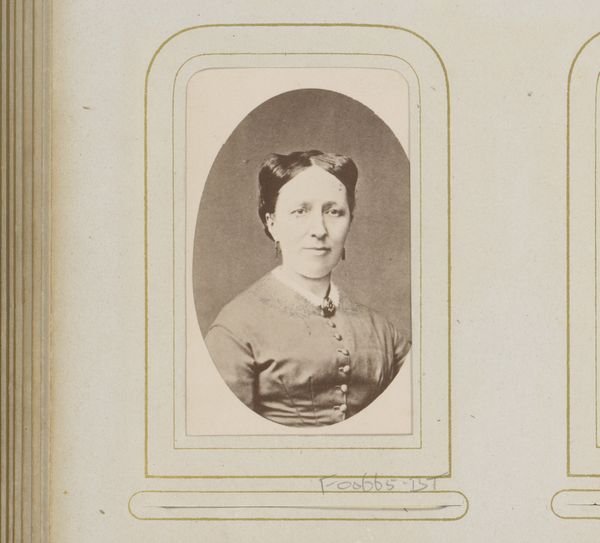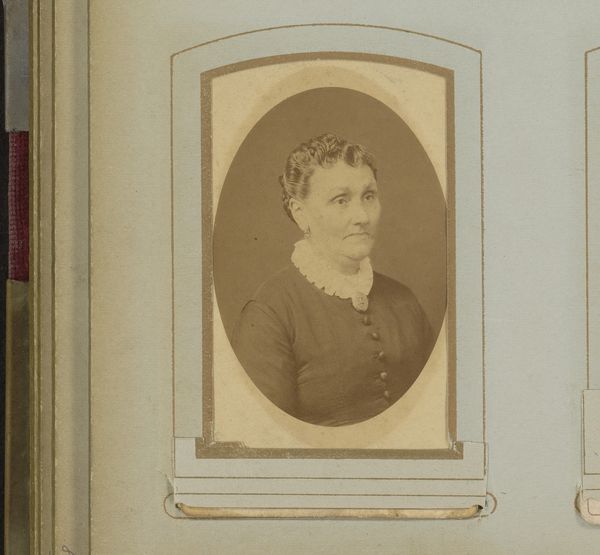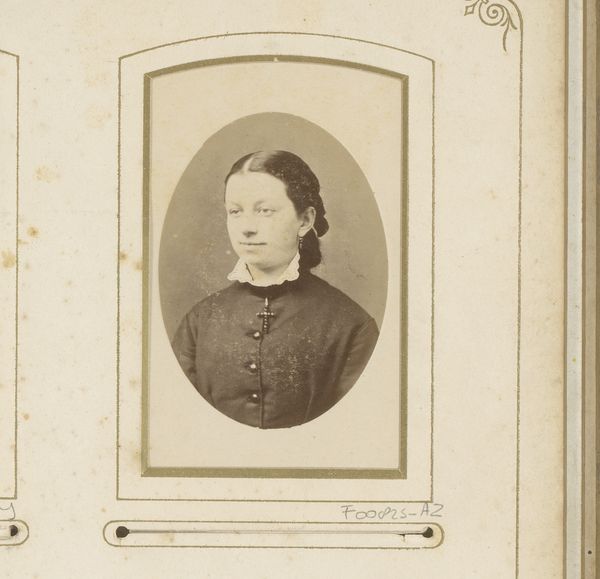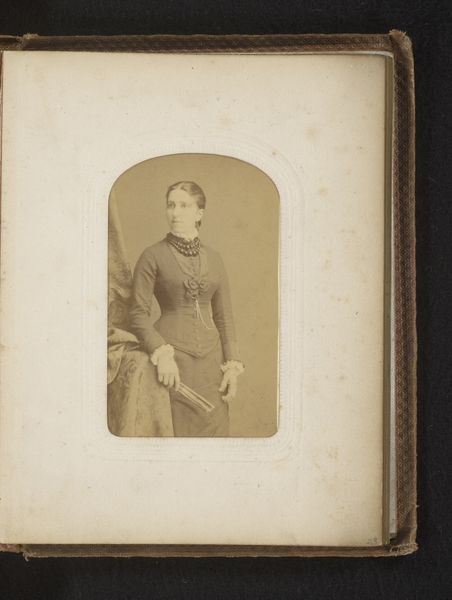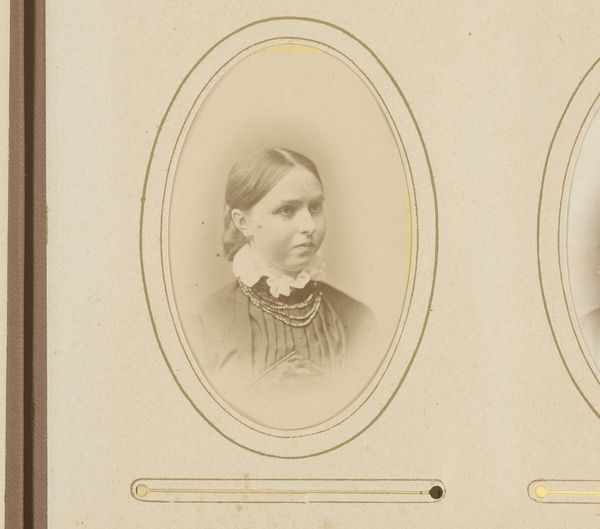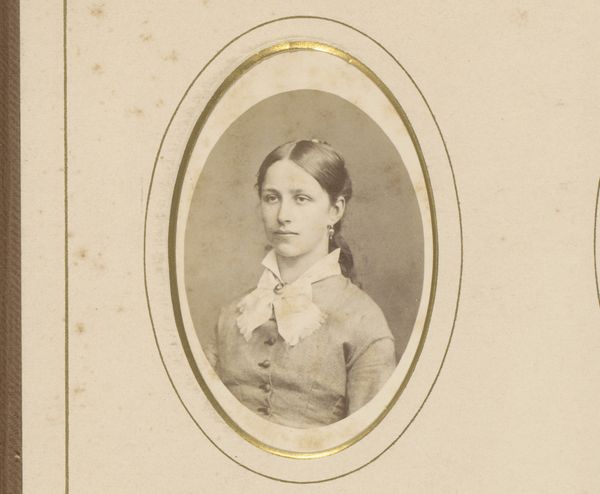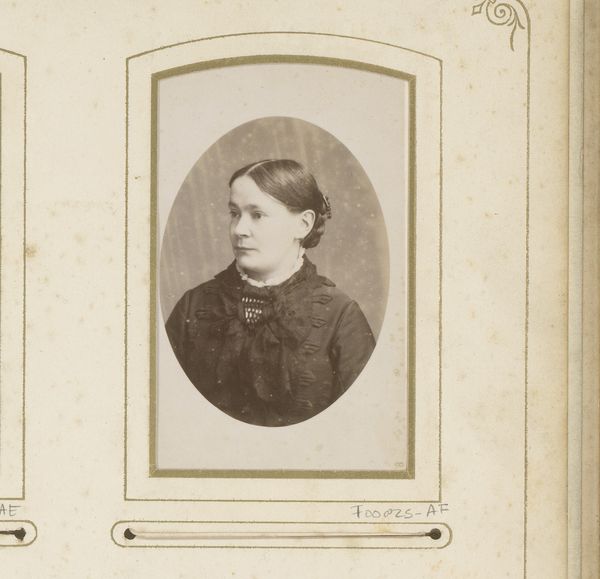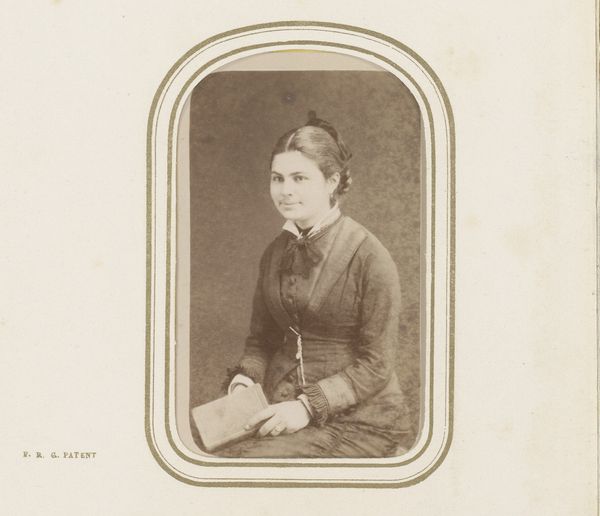
photography, gelatin-silver-print
#
portrait
#
photography
#
gelatin-silver-print
#
realism
Dimensions: height 101 mm, width 62 mm
Copyright: Rijks Museum: Open Domain
This portrait of a young woman was made by Dirk Niekerk in the 19th century, using the medium of photography. Photography in the 1800s was a laborious process, far from the instantaneous digital images we know today. The ambrotype process, likely used here, involved coating a glass plate with light-sensitive chemicals, exposing it in a camera, and then developing it to reveal a ghostly negative image. Skilled hands were needed to make these images visible, which would then be backed with a dark material to make the image appear positive. Consider the social implications of photography at this time. It offered a relatively accessible way for individuals to capture and preserve their likeness. Photography democratized portraiture, previously only afforded by the wealthy. The rise of photography influenced the way society viewed representation, memory, and the self. It wasn’t just about the final image, but the means of production and consumption that came with this technology.
Comments
No comments
Be the first to comment and join the conversation on the ultimate creative platform.
